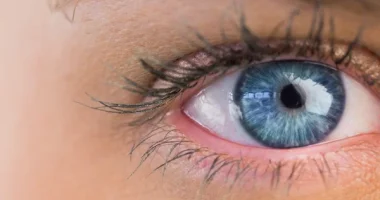Headaches are one of the most common neurological complaints worldwide. In fact, the World Health Organization (WHO) reports that nearly 1 in 2 adults has experienced a headache within the last year. While over-the-counter (OTC) painkillers might seem like the quickest fix, they often come with side effects, ranging from stomach ulcers to rebound headaches. For many, this is why natural headache remedies aren’t just alternative—they’re essential.
Understanding the root cause of each headache type helps determine which natural solution will offer the most immediate and effective relief. Whether it’s a pulsing migraine, the deep ache of a sinus flare-up, or that tight band of tension around your temples after hours at your desk, there’s a drug-free remedy that actually works—and works fast.

Let’s break it down by type, so you can find the right solution for the specific ache you’re battling.
Natural Headache Relief That Works—Fast!
Targeted Remedies for Specific Headache Types. When it comes to holistic headache management, one-size-fits-all doesn’t apply. Tailoring your relief method to the type of headache you’re experiencing can make a world of difference.
Migraine? Sip Ginger Beer (or Ginger Tea)
Migraines are notorious for causing throbbing pain, often on one side of the head, accompanied by nausea, sensitivity to light, and even blurred vision. Instead of reaching for strong pain meds, ginger—yes, the same root in your kitchen—has shown remarkable promise.
A 2014 randomized clinical trial published in Phytotherapy Research found that ginger powder was just as effective as sumatriptan, a common migraine medication, at reducing migraine severity, without the adverse side effects. Ginger helps reduce inflammation and nausea, both of which are hallmark symptoms of migraines.
While ginger tea is a popular option, ginger beer (the non-alcoholic kind) is fast-acting due to its concentration and carbonation, helping the active compounds reach the bloodstream more quickly.
Pro tip: Sip slowly at the first sign of migraine aura. It’s not just soothing—it’s science-backed.
Sinus Headache? Alternate Warm and Cold Compresses
If your forehead, cheeks, or the bridge of your nose throb and your nasal passages feel like they’re full of concrete, you’re likely dealing with a sinus headache. The congestion creates pressure in the sinus cavities, and this pressure translates directly into pain.
Instead of loading up on decongestants, use contrast therapy. Start by placing a warm compress over your sinus areas to loosen mucus and improve drainage. Then follow up with a cold compress to reduce inflammation and numb the pain.
Here’s a quick routine:
- Warm compress: 3–5 minutes
- Cold compress: 30–60 seconds
- Repeat: For 15–20 minutes, up to 3 times daily
This technique mimics the body’s natural circulation pattern and supports lymphatic drainage. Anecdotally, many sinus sufferers report almost immediate pressure relief using this simple method—no pills required.
Tension Headache? Dab Peppermint Oil on Temples
Tension headaches often feel like a tight band across the forehead or the back of the head and neck. They are typically triggered by stress, poor posture, or dehydration.
For these types of headaches, peppermint essential oil is your go-to natural tool. Rich in menthol, it increases blood flow and creates a cooling effect that soothes tense muscles.
A 2016 study published in Der Schmerz journal demonstrated that topical peppermint oil was as effective as 1,000 mg of acetaminophen. To use, dilute a few drops of peppermint oil with a carrier oil (like coconut or almond oil), and apply it to your temples, forehead, and the back of your neck. Within 15 minutes, you’ll likely feel a noticeable difference.
Important tip: Keep the oil away from your eyes, and always patch test before applying more broadly.
Cluster Headache? Press This Acupressure Point
Cluster headaches, though less common, are excruciatingly painful and often occur in cyclical patterns or “clusters.” The pain is typically centered around one eye and may be accompanied by tearing or nasal congestion on the same side.
Acupressure, an ancient Chinese technique, has proven useful in managing these intense episodes. One powerful point to know: LI4 (Hegu), located between your thumb and index finger.
Here’s how to use it:
- Press firmly on the fleshy part between your thumb and index finger.
- Hold for 30 seconds to 1 minute, release, and switch hands.
- Repeat 3–5 times or as needed during an episode.
This technique stimulates nerve pathways that help block pain perception. While it’s not a cure, many cluster headache patients have reported reduced frequency and intensity of attacks with consistent use of acupressure.
Tech Neck Pain? Trace the Alphabet with Your Nose
In our screen-saturated world, “tech neck” has become a modern-day headache trigger. The constant downward tilt of the head strains the cervical spine, leading to neck tension and referred head pain.
Here’s a gentle, effective remedy: Alphabet tracing. Sit or stand upright and pretend your nose is a pencil. Slowly “write” the alphabet in the air with your nose, using controlled, exaggerated head movements. This exercise:
- Loosens tight neck muscles
- Improves blood circulation
- Engages deep postural stabilizers
Spending just 5 minutes tracing letters once or twice a day can significantly reduce the frequency of tech-related headaches. Many physical therapists recommend this as a daily preventative practice, especially for remote workers and students.
The Bottom Line on Natural Headache Relief
The next time a headache strikes, resist the urge to automatically grab a painkiller. With the right knowledge and a little experimentation, natural methods can offer not only immediate relief but also long-term improvement. Whether it’s sipping ginger for a migraine, pressing an acupressure point for cluster attacks, or simply tracing imaginary letters to ease screen-induced strain, there’s a natural solution that aligns with your specific symptoms.
Most importantly, these remedies carry minimal risk, are often inexpensive, and support the body’s own healing mechanisms. By becoming more aware of what your body needs in each moment, you can address headaches proactively rather than reactively—and stay pain-free without unwanted side effects.
FAQs on Natural Headache Relief
Q. What is the fastest natural way to get rid of a headache?
A. The fastest method depends on the headache type. For tension headaches, peppermint oil provides near-instant relief. For migraines, ginger tea or beer works rapidly, especially when taken at the first sign of symptoms.
Q. Is it safe to rely on natural remedies for chronic headaches?
A. Yes, as long as you’ve ruled out underlying medical conditions. Many natural solutions, such as acupressure, hydration, essential oils, and herbs, have a strong safety profile when used properly. Still, consult a healthcare provider for persistent or worsening symptoms.
Q. Can hydration alone relieve headaches?
A. Dehydration is a common but overlooked trigger. Simply drinking 500–750 ml of water at the onset of a headache can reduce pain intensity within 30 minutes, particularly for tension or hangover-related headaches.
Also Read | 7 Natural Ways to Boost Bone Density After 50










